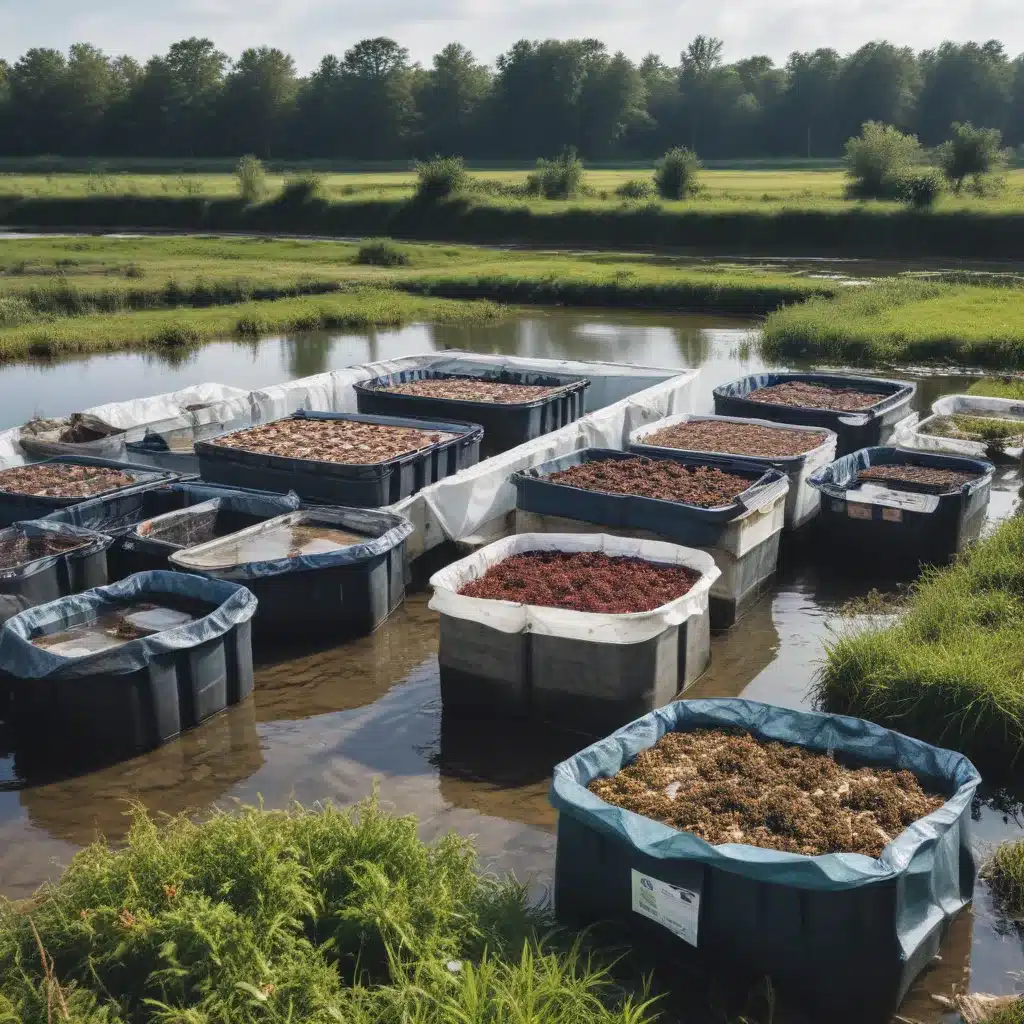
The Rise of Aquaculture and the Need for Sustainable Waste Management
The global demand for seafood has skyrocketed in recent decades, leading to a rapid expansion of the aquaculture industry. As fish farms strive to meet this growing need, they have faced a critical challenge: the increasing volume of waste generated from their operations. Undigested feed, recycled nitrogen, and other byproducts have piled up, slowing production and profitability for aqua-preneurs.
Conventional aquaculture waste management methods have proven insufficient, and the industry has had to seek out innovative solutions. One such promising technology is biofloc technology (BFT), which offers a sustainable alternative for managing aquaculture waste.
Biofloc Technology: Transforming Waste into Nourishment
BFT operates on a simple yet ingenious premise: converting the solid waste generated from uneaten feed or fish feces into a valuable resource. By harnessing the power of naturally occurring bacteria, BFT systems can transform these waste products into nutritious protein that can be fed back to the cultured animals.
The process works as follows:
- Waste Conversion: The solid and dissolved waste, rich in carbon, nitrogen, ammonium, and phosphorus, is broken down by a consortium of bacteria and microorganisms.
- Biofloc Formation: The bacteria and microbes proliferate, forming a dense, nutritious “biofloc” that remains suspended in the water.
- Nutrient Recycling: The fish or other cultured animals can then consume the biofloc, obtaining essential nutrients and proteins directly from the waste.
This closed-loop system not only reduces waste but also provides a valuable in-house source of supplementary feed for the aquaculture operation. By converting waste into nourishment, BFT offers a sustainable and cost-effective solution to the growing problem of aquaculture waste management.
Benefits of Biofloc Technology
The advantages of adopting BFT in aquaculture operations are numerous and far-reaching:
-
Waste Reduction: BFT systems effectively convert the solid and dissolved waste generated by aquaculture into a valuable resource, minimizing the environmental impact of waste discharge.
-
Improved Water Quality: The bacterial activity in BFT systems helps maintain water quality by removing nitrogenous compounds and other pollutants, reducing the need for water exchanges.
-
Biosecurity Enhancement: BFT can limit the use of antibiotics and chemicals in aquaculture, as the biofloc environment provides a natural barrier against pathogens, promoting animal health and welfare.
-
Nutrient Recycling: The biofloc serves as a supplementary feed source, reducing the reliance on expensive commercial feeds and improving the overall efficiency of the aquaculture system.
-
Cost-Effectiveness: By converting waste into a usable resource and minimizing the need for water exchanges and external feed inputs, BFT can significantly improve the profitability of aquaculture operations.
-
Sustainability: BFT aligns with the principles of a circular economy, where waste is transformed into a valuable input, promoting the long-term environmental and economic sustainability of aquaculture.
Implementing Biofloc Technology
Successful implementation of BFT in aquaculture systems requires careful consideration of several operational parameters, including carbon-to-nitrogen (C:N) ratios, aeration, and monitoring of water quality.
Carbon-to-Nitrogen Ratio: Maintaining the appropriate C:N ratio is crucial for optimal biofloc formation and nutrient cycling. Typically, a C:N ratio between 15:1 and 20:1 is recommended, which can be achieved by supplementing the system with organic carbon sources, such as molasses, wheat flour, or agricultural byproducts.
Aeration and Mixing: Proper aeration and mixing are essential to keep the biofloc suspended in the water column, ensuring even distribution of nutrients and oxygen for the microbial community.
Water Quality Monitoring: Regular monitoring of water quality parameters, such as dissolved oxygen, pH, ammonia, nitrite, and nitrate, is crucial for maintaining a healthy biofloc system and ensuring the well-being of the cultured animals.
Case Studies: BFT in Action
The successful implementation of BFT has been demonstrated in various aquaculture settings around the world. Here are a few examples:
-
African Catfish (Clarias gariepinus) Culture: A study conducted in Nigeria showed that incorporating BFT in the culture of African catfish significantly improved growth performance, feed utilization, and the overall health and immunity of the fish, while also reducing the environmental impact of waste discharge.
-
Pacific White Shrimp (Litopenaeus vannamei) Culture: Researchers in Malaysia found that the co-cultivation of macroalgae (Ulva lactuca f. fasciata) in a zero-water exchange BFT system for rearing Pacific white shrimp improved the composition and stability of the biofloc, leading to enhanced production.
-
Nile Tilapia (Oreochromis niloticus) and Amazon River Prawn (Macrobrachium amazonicum) Integrated Culture: A study in Brazil demonstrated the benefits of an integrated multitrophic aquaculture system using BFT, where the nutrient cycling between Nile tilapia and Amazon River prawn resulted in improved phosphorus budget and reduced environmental impact.
These case studies highlight the versatility and effectiveness of BFT in various aquaculture settings, providing a promising solution for sustainable waste management and production enhancement.
The Path Forward: Embracing Biofloc Technology
As the aquaculture industry continues to grow, the need for innovative and sustainable waste management solutions has become increasingly urgent. Biofloc technology offers a promising way forward, transforming waste into a valuable resource and promoting the long-term viability of aquaculture operations.
By adopting BFT, aquaculture producers can not only mitigate the environmental impact of their operations but also enhance profitability, improve animal health, and contribute to the overall sustainability of the industry. As the world strives to meet the growing demand for seafood, BFT stands as a shining example of how technology can play a crucial role in achieving a more sustainable and prosperous aquaculture sector.
To learn more about the practical applications of BFT and how it can benefit your aquaculture operation, visit the Joint Action for Water website, where you can find a wealth of resources and expert guidance on water and sanitation technologies.

